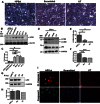MAP1LC3B overexpression protects against Hermansky-Pudlak syndrome type-1-induced defective autophagy in vitro
- PMID: 26719147
- PMCID: PMC4888554
- DOI: 10.1152/ajplung.00213.2015
MAP1LC3B overexpression protects against Hermansky-Pudlak syndrome type-1-induced defective autophagy in vitro
Abstract
Hermansky-Pudlak syndrome (HPS) is a rare autosomal recessive disorder, and some patients with HPS develop pulmonary fibrosis, known as HPS-associated interstitial pneumonia (HPSIP). We have previously reported that HPSIP is associated with severe surfactant accumulation, lysosomal stress, and alveolar epithelial cell type II (AECII) apoptosis. Here, we hypothesized that defective autophagy might result in excessive lysosomal stress in HPSIP. Key autophagy proteins, including LC3B lipidation and p62, were increased in HPS1/2 mice lungs. Electron microscopy demonstrated a preferable binding of LC3B to the interior of lamellar bodies in the AECII of HPS1/2 mice, whereas in wild-type mice it was present on the limiting membrane in addition to the interior of the lamellar bodies. Similar observations were noted in human HPS1 lung sections. In vitro knockdown of HPS1 revealed increased LC3B lipidation and p62 accumulation, associated with an increase in proapoptotic caspases. Overexpression of LC3B decreased the HPS1 knockdown-induced p62 accumulation, whereas rapamycin treatment did not show the same effect. We conclude that loss of HPS1 protein results in impaired autophagy that is restored by exogenous LC3B and that defective autophagy might therefore play a critical role in the development and progression of HPSIP.
Keywords: Hermansky-Pudlak syndrome; Hermansky-Pudlak syndrome-associated interstitial pneumonia; alveolar epithelial cells; apoptosis; autophagy; lung fibrosis.
Copyright © 2016 the American Physiological Society.
Figures






Similar articles
-
Epithelial stress and apoptosis underlie Hermansky-Pudlak syndrome-associated interstitial pneumonia.Am J Respir Crit Care Med. 2010 Jul 15;182(2):207-19. doi: 10.1164/rccm.200909-1414OC. Epub 2010 Apr 8. Am J Respir Crit Care Med. 2010. PMID: 20378731 Free PMC article.
-
Modeling of lung phenotype of Hermansky-Pudlak syndrome type I using patient-specific iPSCs.Respir Res. 2021 Nov 4;22(1):284. doi: 10.1186/s12931-021-01877-8. Respir Res. 2021. PMID: 34736469 Free PMC article.
-
Lung pathology of pale ear mouse (model of Hermansky-Pudlak syndrome 1) and beige mouse (model of Chediak-Higashi syndrome): severity of giant lamellar body degeneration of type II pneumocytes correlates with interstitial inflammation.Pathol Int. 2005 Mar;55(3):137-43. doi: 10.1111/j.1440-1827.2005.01811.x. Pathol Int. 2005. PMID: 15743322
-
Disorders of vesicles of lysosomal lineage: the Hermansky-Pudlak syndromes.Curr Mol Med. 2002 Aug;2(5):451-67. doi: 10.2174/1566524023362357. Curr Mol Med. 2002. PMID: 12125811 Review.
-
The molecular machinery for the biogenesis of lysosome-related organelles: lessons from Hermansky-Pudlak syndrome.Semin Cell Dev Biol. 2002 Aug;13(4):271-8. doi: 10.1016/s1084952102000563. Semin Cell Dev Biol. 2002. PMID: 12243726 Review.
Cited by
-
Dysregulated alveolar epithelial cell progenitor function and identity in Hermansky-Pudlak syndrome.JCI Insight. 2024 Dec 19;10(3):e183483. doi: 10.1172/jci.insight.183483. JCI Insight. 2024. PMID: 39699958 Free PMC article.
-
Epithelial-macrophage interactions determine pulmonary fibrosis susceptibility in Hermansky-Pudlak syndrome.JCI Insight. 2016 Oct 20;1(17):e88947. doi: 10.1172/jci.insight.88947. JCI Insight. 2016. PMID: 27777976 Free PMC article.
-
Hermansky-Pudlak Syndrome.Clin Chest Med. 2016 Sep;37(3):505-11. doi: 10.1016/j.ccm.2016.04.012. Epub 2016 Jun 30. Clin Chest Med. 2016. PMID: 27514596 Free PMC article. Review.
-
The Role of Autophagy in Lamellar Body Formation and Surfactant Production in Type 2 Alveolar Epithelial Cells.Int J Biol Sci. 2022 Jan 1;18(3):1107-1119. doi: 10.7150/ijbs.64285. eCollection 2022. Int J Biol Sci. 2022. PMID: 35173542 Free PMC article.
-
Susceptibility of microtubule-associated protein 1 light chain 3β (MAP1LC3B/LC3B) knockout mice to lung injury and fibrosis.FASEB J. 2019 Nov;33(11):12392-12408. doi: 10.1096/fj.201900854R. Epub 2019 Aug 20. FASEB J. 2019. PMID: 31431059 Free PMC article.
References
-
- Anderson PD, Huizing M, Claassen DA, White J, Gahl WA. Hermansky-Pudlak syndrome type 4 (HPS-4): clinical and molecular characteristics. Hum Genet 113: 10–17, 2003. - PubMed
-
- Anikster Y, Huizing M, White J, Shevchenko YO, Fitzpatrick DL, Touchman JW, Compton JG, Bale SJ, Swank RT, Gahl WA, Toro JR. Mutation of a new gene causes a unique form of Hermansky-Pudlak syndrome in a genetic isolate of central Puerto Rico. Nat Genet 28: 376–380, 2001. - PubMed
-
- Araya J, Kojima J, Takasaka N, Ito S, Fujii S, Hara H, Yanagisawa H, Kobayashi K, Tsurushige C, Kawaishi M, Kamiya N, Hirano J, Odaka M, Morikawa T, Nishimura SL, Kawabata Y, Hano H, Nakayama K, Kuwano K. Insufficient autophagy in idiopathic pulmonary fibrosis. Am J Physiol Lung Cell Mol Physiol 304: L56–L69, 2013. - PubMed
-
- Blommaart EF, Luiken JJ, Meijer AJ. Autophagic proteolysis: control and specificity. Histochem J 29: 365–385, 1997. - PubMed
-
- Boissy RE, Zhao Y, Gahl WA. Altered protein localization in melanocytes from Hermansky-Pudlak syndrome: support for the role of the HPS gene product in intracellular trafficking. Lab Invest 78: 1037–1048, 1998. - PubMed
Publication types
MeSH terms
Substances
Grants and funding
LinkOut - more resources
Full Text Sources
Other Literature Sources
Molecular Biology Databases

